The Best Places To Visit The Golden Triangle in India
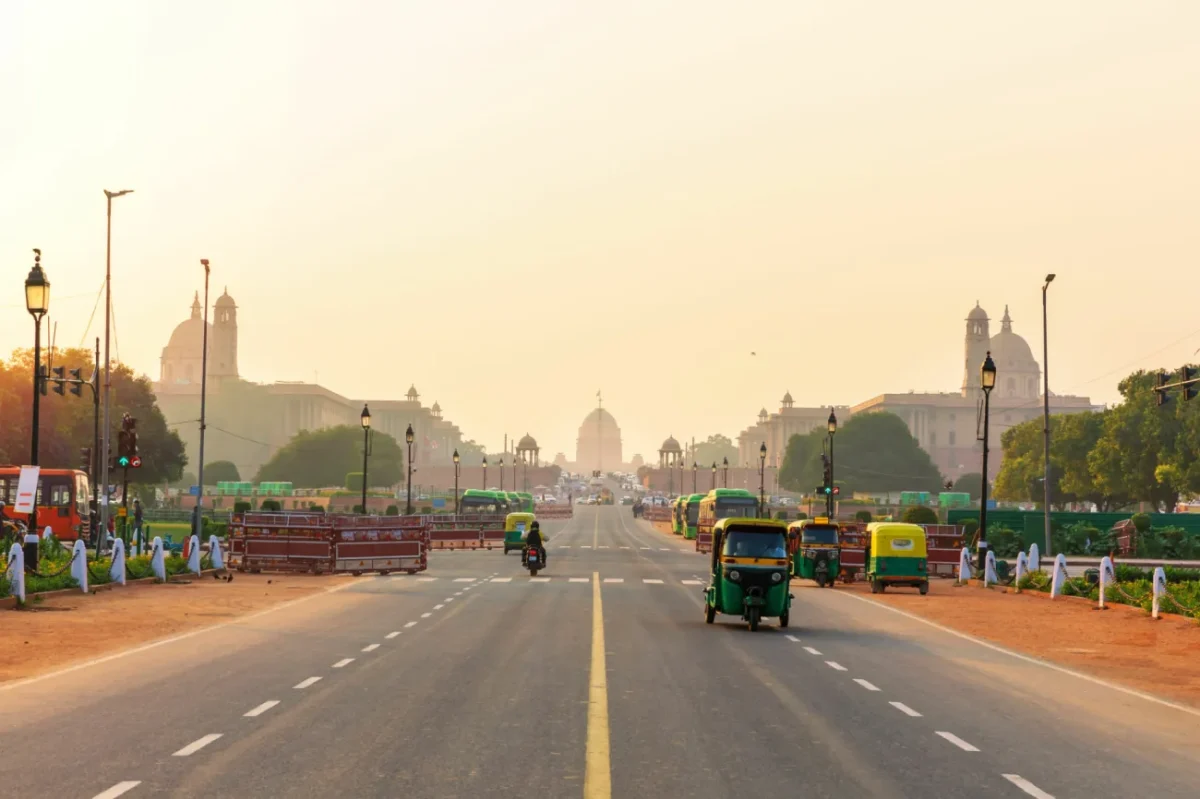
The best place to visit the Golden Triangle in India is well known and includes the capital city of Delhi, Agra and Jaipur. Discover every city in the Golden Triangle symbolizes a distinct period that rich history, diversity, and architectural wonders have to offer in India. Join us as we experience the core of India’s historical legacy, stunning architecture, and diverse culture and are escorted by an India tourist visa to travel across the country’s heartland. As you immerse yourself in the diverse fabric of India’s heritage and traditions, this journey promises to have a lasting effect on your soul. On this blog page, you will get to know about Popular places to visit with eVisa Indians.
Explore the Golden Triangle with India Tourist Visa
Three Indian cities combine to form the Golden Triangle when viewed as a triangle on a map. Delhi, the capital city of India, and Agra, the second-most significant city in the triangle. The world-famous one of the wonders Taj Mahal of Agra is a World Heritage Site by UNESCO. Delhi is a mash-up of modernity with old history. Known as “The Pink City,” Jaipur is a charming city with palaces, forts, and bustling markets. With its historical sites, architectural wonders, and cultural legacy, each city in the Golden Triangle is one of India’s most well-liked and fascinating travel destinations.
Delhi (Places to visit)
Delhi is the capital city of India, which stands at the intersection of the nation’s past and present, and is typically where travelers start their journey to the Golden Triangle. The city’s busy streets produce a startling contrast between skyscrapers from the 21st century and landmarks going before centuries.
Red Fort
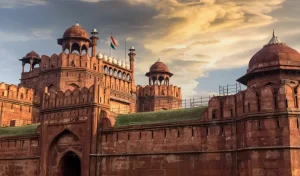
The Red Fort combines the rich historical background of India with its modern capital. Situated in the center of Delhi’s Old Town, it served as the Mughal Emperor’s home following the death of Shah Jahan. As the Prime Minister hoists the national flag and delivers a speech on India’s Independence Day (15 August), it now has the highest national significance. A powerful representation of India’s values as a Defender is the Red Fort. It represents bravery in battle and in time, with its octagonal form dotted with turrets and defenses, and a fusion of Indian, Persian, and European traditions in its art and construction.
Qutub Minar
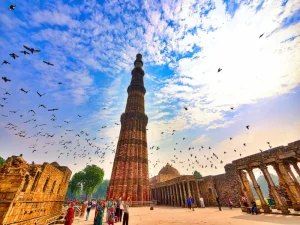
Qutub Minar, at 73 meters high, is a striking representation of Delhi’s tenacity. It is reported that the remnants of Hindu temples were used to build this minar by the founder of the Delhi Sultanate. However, it is a contentious location. That doesn’t take away from its splendor in Mehrauli, Delhi. It is the tallest brick-and-mortar minar in the world. Qutub Minar is a World Heritage Site acknowledged by UNESCO. Furthermore, it is one of the primary points of interest on your Delhi Golden Triangle trip. The minaret is composed of five stories that are stacked one on top of the other and taper down to one story. Fine sandstone and marble surfaces, some with Quranic phrases engraved on them, make up the minarets.
Humayun’s Tomb
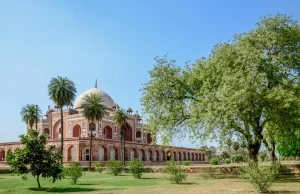
Let me tell you that some people argue that it beats the Taj Mahal. Some claim that its architectural advantages are much greater. Some folks don’t believe a visit is worthwhile at all. However, there’s no denying that it’s a worthwhile trip. Among the most famous tombs in the world is the one belonging to Humayun. The late monarch Humayun ordered it, and it stands in the center of Delhi. Humanyun’s wife Bega Begum was in charge of designing the tomb. All year long, there is greenery all around the grounds. The Charbagh, or Persian garden, is the name given to the tomb’s Persian garden. The United Nations designated the tomb as a World Heritage Site in 1993.
Chandni Chowk
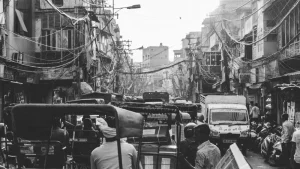
Chandni Chowk is also known as Moonlight Square. And it is among the greatest spots in Delhi for street food. You can get some amazing street cuisine like tikkas and parathas here. Along with you can purchase silverware, jewelry, lanterns, scarves, suits, sarees, and other items, you can also shop for street fashion. It is a historic home and streets are the area’s main attention, along with hearty street cuisine. The moonlight that bounces off the canals at night gave rise to the area’s name. Traveling from all over the world, street photographers travel to Delhi to take pictures of daily life on camera. To visit these places, you have to go through the eVisa for India website to explore more about visa conditions and procedures.
Agra (Places to visit)
Our next destination on this fantastic journey is Agra. If we talk about the location of the majestic Taj Mahal, it comes under one of the world’s seven wonders. A marvel of marble construction, the Taj Mahal represents love and architectural brilliance in India.
Taj Mahal
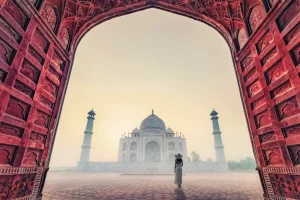
The Taj Mahal represents the cemetery of love, the sight of sore eyes, and the arrival of love, and sorrow. The Taj Mahal, also known as the Crown of Palaces, has a complex structure. Two graves are interred beneath it. It is part of one of the seven wonders of the world and comes under a World Heritage Site accomplished by UNESCO. It depicts the tale of the love between the late Mumtaz and Shah Jahan (her husband) who is the powerful Mughal emperor. The Taj Mahal is a must-see while in Agra and the main attraction for most visitors to Agra. This architectural marvel, which is located in Agra on the banks of the Yamuna River, has to be seen in the morning in the summer and in the afternoon in the winter.
Agra Fort
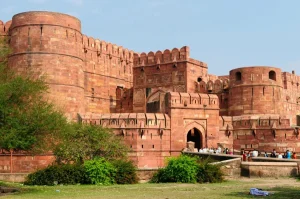
Akbar the Great constructed another architectural marvel in Agra. This fort is sometimes referred to as the “Red Fort of Agra” since only red sandstone was used in its building. Before Delhi became the capital, this was the Mughals’ home. The UNESCO has designated this fort as a World Heritage Site. The “Moti Masjid,” “Diwan-e-khas,” “Diwan’e-Aam,” and “Jagarni” or “Jahangiri” Mahal are the four most interesting chambers in this fort.
Fatehpur Sikri
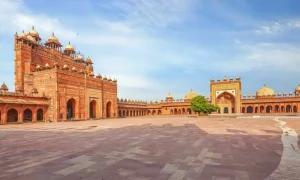
The Fatehpur Sikri fort is the center of the Mughal city of Agra, which served as Emperor Akbar’s capital throughout his rule. The massive red sandstone fort symbolizes the location of Agra’s former Mughal capital before it was relocated to Delhi. Originally the king’s entrance, the Buland Darwaza is the most well-known feature in Fatehpur Sikhri. At its highest point, the entrance is 55 meters high, and it progressively descends to human height. The main attractions to see in Agra and the Golden Triangle are Jama Masjid, Salim Chishti’s tomb, Diwan Aam and Diwan Ekhaas, Birbal’s house, Panch Mahal, and the renowned palace of Marium-us-Zamani, which was the home of Akbar’s royal queen Jodhah bai.
Jaipur (Places to visit)
The final treasure of the Golden Triangle is Jaipur. And sometimes referred to as the Pink City of Jaipur because of the bright hues of its structures, it is a city well-known for its rich history, elaborate palaces, and colorful culture.
Hawa Mahal
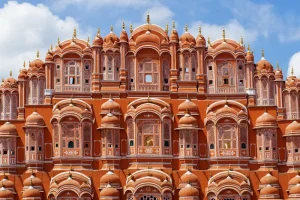
It is translated as “The Palace of Winds.” It’s a pink palace in Jaipur, Rajasthan. Maharaja Sawai Pratap Singh constructed it with several windows, that would let the women in the palace glimpse the outside world. This is the world’s largest unsupported sandstone palace and was constructed in 1799 with lots of Stone windows (jharokas), or lattice-work windows, that allow sufficient airflow to keep the space breezy and cool throughout the day of the year. The Hawa Mahal, which stands as a stunning marvel of what a king might accomplish for the women in his household, adds to Jaipur’s renown as the pink city. It is an absolute must-see when in Jaipur.
Amber Fort
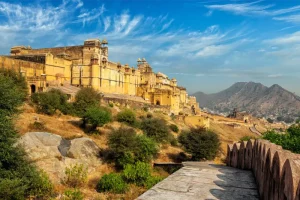
The Rajputana dynasty’s capital, Amer also known as Amber. It was situated close to modern-day Jaipur. Built above the peak of “Eagle Eye Peak,” with a view of Lake Maota, Amer Fort is one of the biggest strongholds in the area. In addition to housing the “Diwan-e-Kaas,” “Diwan’-Aam,”, “Jai Mandir,” “Sheesh Mahal,” or the mirror palace, and “Sukh Niwas,” a unique space designed to remain cool and fresh all the time, the fort is associated with the “Jaitari” or “Palace” of Jaipur. The palace fort has several entry points and four gates. Ganesh Pol, or the “God of Elephants,” is the name of one of the largest. Elephant rides up to Amer Fort are a unique experience.
City Palace
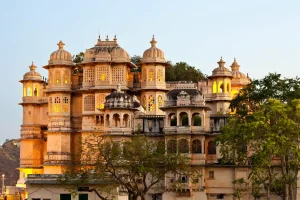
One of the most well-liked tourist destinations is the City Palace in Jaipur, which is also a significant landmark. Constructed under the governance of Maharaja Sawai Yaj Singh, it stands as one of Jaipur’s most exceptional palaces in terms of both artistic and architectural design.
Experiencing the Golden Triangle
Beyond only being a historical location, the Golden Triangle offers visitors a taste of India’s colorful culture, rich history, and hospitable populace. Apart from the architecture, one may enjoy genuine local foods, lively celebrations, traditional artwork and handicrafts, and the chance to interact with the local populace. Before planning to visit the Golden Triangle places in India, you have to first apply for an Indian tourist visa.
Tips for Travelers:
Plan Sufficient Time
Every town in the Golden Triangle has its unique charm and things to offer. Make sure you have enough time to visit each location and engage yourself and also remember that you have to apply Indian visa, before planning anything.
Local Transportation
Opt for local transportation like a train or private vehicle to travel between cities more authentically.
Respect Local Customs
To truly immerse yourself in the authentic culture, take the time to learn about the customs and culture of each place. If stuck on any steps of the visa process without any delay, you can contact us or email us and our team will sort out your problem immediately.
Why is it called the Golden Triangle?
In India, the triangle formed on a map by the three ancient cities of Delhi, Agra, and Jaipur is referred to as the “Golden Triangle.” These cities are arranged geographically so that, when joined, they resemble a triangle. Each city’s abundance of history and culture is often referenced by the phrase “golden.” Every city in the Golden Triangle boasts breathtaking architecture, a rich history, and a vibrant culture. India’s rich history and culture can be experienced at this once in a lifetime.
What is the best way to visit the Golden Triangle in India?
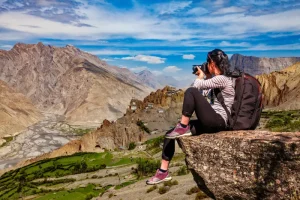
By car, train, or a combination of the two, exploring the Golden Triangle is most enjoyable. Delhi is the home of the Red Fort and the Qutub Minar, two most iconic sites in India. And it is the ideal destination to begin your trip. Travel to Agra, the location of the Taj Mahal and the Agra Fort from Delhi. Proceed onwards to Jaipur from Agra. Discover the magnificence of the Amber Fort and the vibrant markets from Jaipur. You may take your time discovering the cultural and historical value of each city, whether you can take an option for a guided tour or rent a private vehicle with a knowledgeable driver.
Which city is better, Delhi or Jaipur?
Several of the most recognizable landmarks in the world may be found in Delhi, the capital city of India. From the India Gate to the Red Fort. With its museums, vibrant street life, and variety of culinary options, it’s also a center of culture. Conversely, Jaipur is often to as the “Pink City.” With its regal palaces and forts (like Amber Fort), vibrant marketplaces, and rich cultural legacy, it exudes Rajasthan charm. Jaipur concentrates on Rajasthan’s regal history and cultural legacy, whilst Delhi offers a blend of historic and modern elements. The decision between the two usually boils down to personal taste, with the spirit of Rajasthan culture in a more condensed setting, while Delhi offers a greater array of attractions.
Is there a best time of year to visit the Taj Mahal?
The months of October through March are the ideal times to see the Taj Mahal in Agra. This time of year, which falls between late October and early March, is perfect for outdoor activities like visiting the Taj Mahal because the temperature is often between 25°C and 10°C. In these months, you may appreciate the Taj Mahal and its surroundings without having to struggle with the intense summer heat because the weather in Agra is usually pretty comfortable. The stunning views of the Taj Mahal that are made possible by the clear skies during these months, particularly at sunrise and sunset, enchant visitors.
How should I see the Golden Triangle in India?
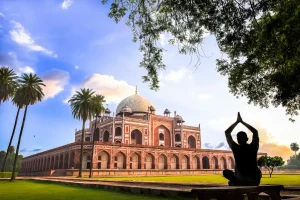
Creating a carefully planned schedule that covers the principal attractions of Delhi, Agra, and Jaipur is the best way to explore the Golden Triangle of tourist destinations. You may get from point A to point B quickly and efficiently with a guided tour or private transportation, allowing you to maximize your time. Delhi is the starting point of your trip, where you may explore the lively culture and extensive history of the city. After that, travel to Agra to visit the famous Taj Mahal and other sites, including Agra Fort. Proceed to Jaipur to discover its regal past, impressive forts, and lively marketplaces. You’ll be able to learn more about the background, way of life, and significance of each location in India’s Golden Triangle by working with local guides.
How to reach each city of the Golden Triangle in India?
There are various ways to travel to each of the three cities that make up the Golden Triangle. Most travelers begin their journey in Delhi, which is well-connected by road, train, and air. An important entry point into the city is the Indira Gandhi International Airport. The Taj Mahal is located in Agra, which is accessible from Delhi by train or road. About 200 km separate from Delhi and Agra, the Gatimaan Express train is one of the fastest high-speed trains that run between the two cities. Jaipur is accessible by car, rail, or air from Delhi or Agra. It is renowned for its culture and fortifications. Visitors can move easily and conveniently inside the Golden Triangle thanks to the Jaipur International Airport and the well-functioning train and bus links.
Is it worth it to visit to Golden Triangle in India?
Yes, it is worth it to visit the Golden Triangle in India because anyone who wants to enjoy India’s rich tradition, culture, and architectural splendor must travel to the “golden triangle” in India. Some of the most well-known sites in India are found in the Golden Triangle, which comprises Delhi and Agra. These include the Red Fort, the Qutub Minar, the Amber Fort, the Taj Mahal, and many more. Every city in the Golden Triangle represents India, with the dynasty’s abundance of the Mughals’ magnificent architecture to the vivid colors of Rajasthan culture. The Golden Triangle is an extraordinarily fascinating and enlightening location to learn about India’s history and culture because of its rich legacy, numerous attractions, and cultural encounters.
Is one day enough for the Golden Triangle in India?
It takes more than one day to experience the Indian Golden Triangle, which consists of Delhi, Agra, and Jaipur. Every location on this circuit offers a plethora of immersive activities, historical landmarks, and cultural attractions that are well worth spending additional time exploring. It’s advisable to allot at least two days for each city if you want to fully appreciate the magnificence and significance of famous landmarks like the Taj Mahal in Agra, the Red Fort in Delhi, and the Amber Fort in Jaipur. Although you can cover the main sights on a short itinerary, staying longer will give you more time to immerse yourself in the Golden Triangle’s rich history and culture.
How long should I spend in the Golden Triangle in India?
In general, you should plan to stay in the Golden Triangle for seven to ten days. This allows you plenty of time to fully immerse yourself in Agra’s and Jaipur’s rich cultural heritage. You will have plenty of opportunities to explore famous locations, take in the local way of life, and local cuisine, and learn new things if you spend two to three days in each city. You can better appreciate the architecture, history, and culture that each city in the Golden Triangle has to offer by spending more time in each one. This will guarantee that your trip across India’s rich history and culture is both unforgettable and enlightening.
In conclusion, the rich history and culture of India can be glimpsed through the Golden Triangle. Along with breathtaking views, this voyage will provide you with a deeper understanding of India’s past, present, and the enduring spirit that drives this extraordinary country. Every city in this triangle has a fascinating tale to tell, making it a must-visit location for anyone hoping to have an amazing trip in India.
